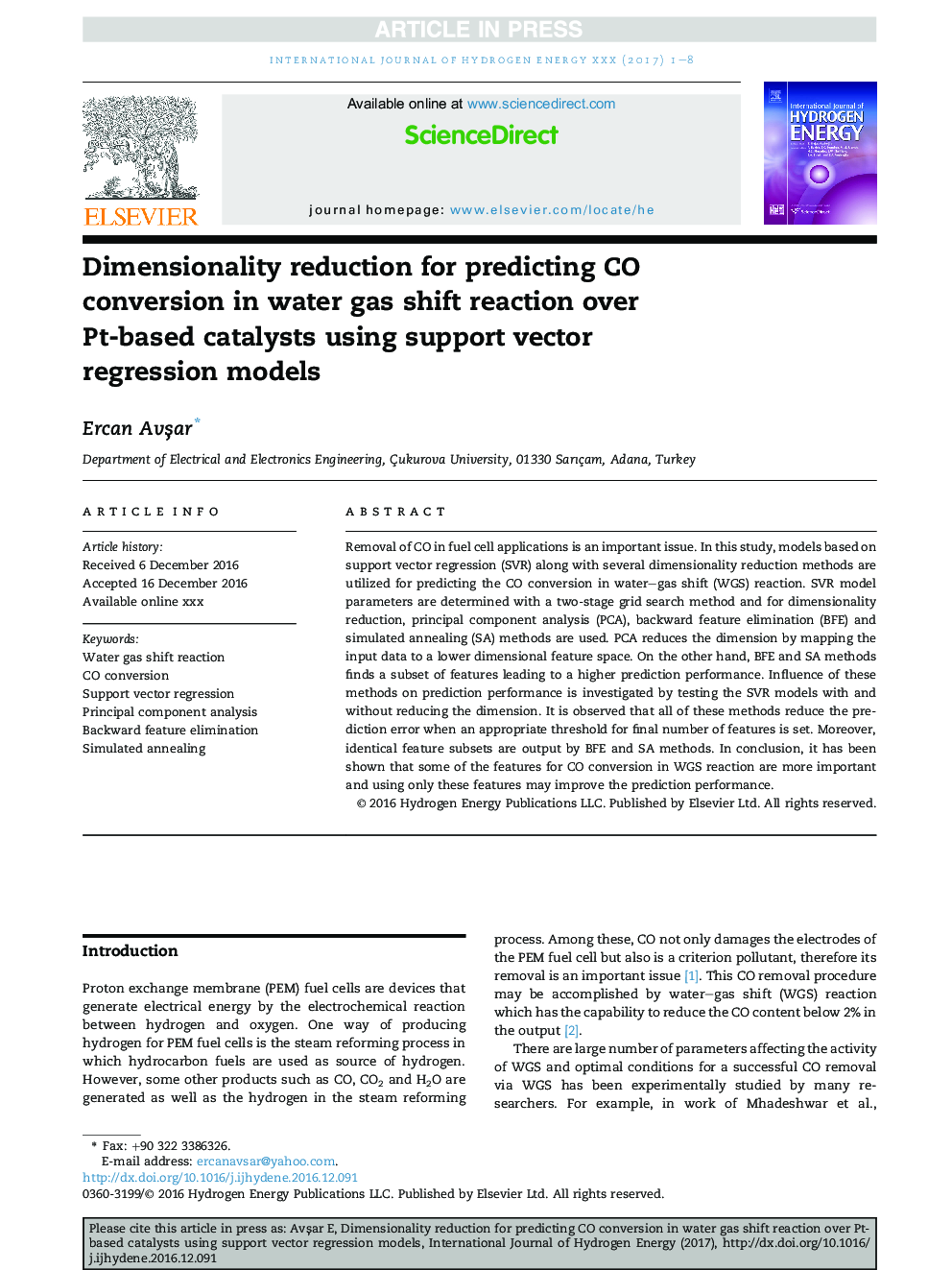| Article ID | Journal | Published Year | Pages | File Type |
|---|---|---|---|---|
| 5145322 | International Journal of Hydrogen Energy | 2017 | 8 Pages |
Abstract
Removal of CO in fuel cell applications is an important issue. In this study, models based on support vector regression (SVR) along with several dimensionality reduction methods are utilized for predicting the CO conversion in water-gas shift (WGS) reaction. SVR model parameters are determined with a two-stage grid search method and for dimensionality reduction, principal component analysis (PCA), backward feature elimination (BFE) and simulated annealing (SA) methods are used. PCA reduces the dimension by mapping the input data to a lower dimensional feature space. On the other hand, BFE and SA methods finds a subset of features leading to a higher prediction performance. Influence of these methods on prediction performance is investigated by testing the SVR models with and without reducing the dimension. It is observed that all of these methods reduce the prediction error when an appropriate threshold for final number of features is set. Moreover, identical feature subsets are output by BFE and SA methods. In conclusion, it has been shown that some of the features for CO conversion in WGS reaction are more important and using only these features may improve the prediction performance.
Keywords
Related Topics
Physical Sciences and Engineering
Chemistry
Electrochemistry
Authors
Ercan AvÅar,
